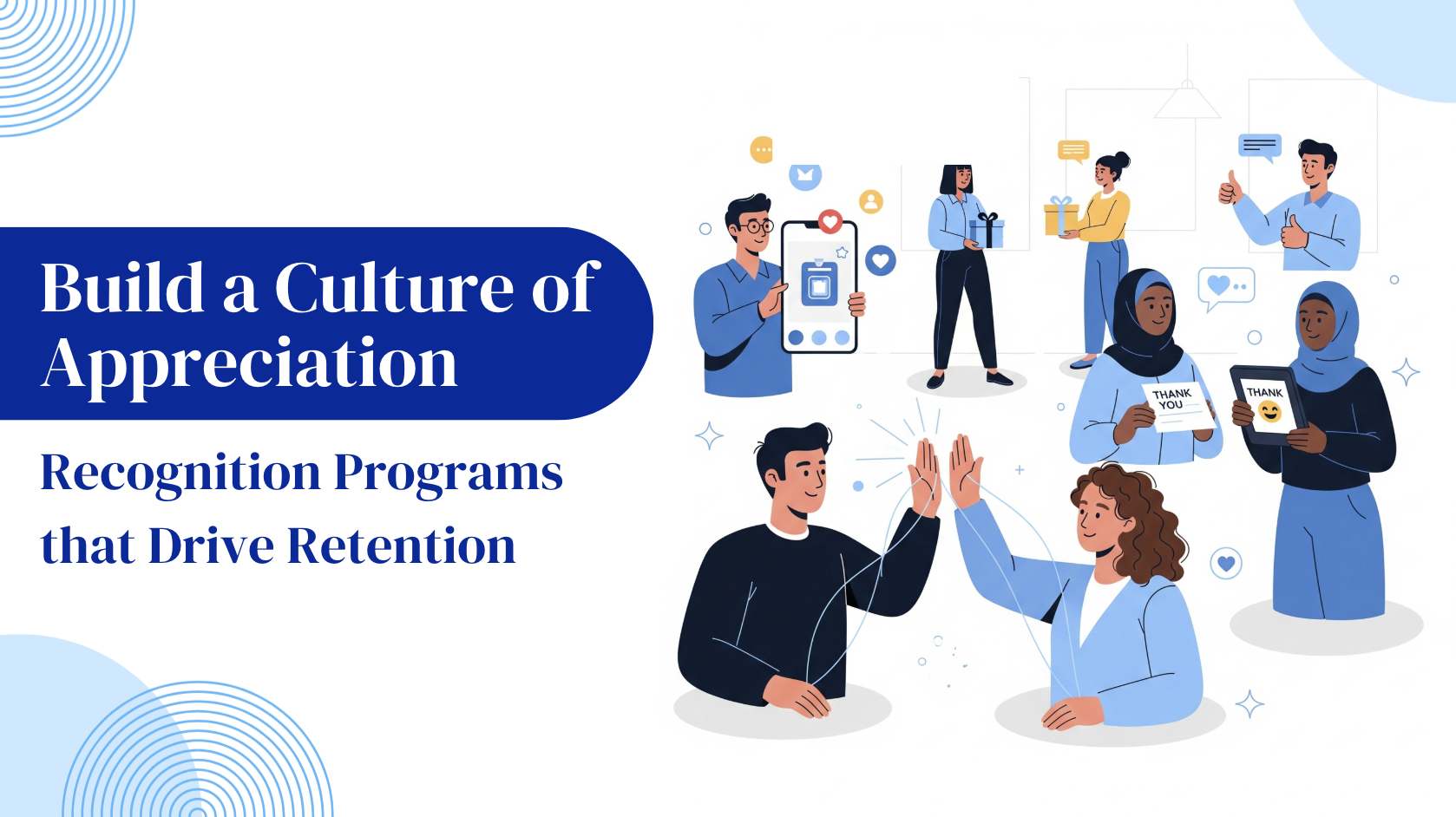Develop Peer-to-Peer Recognition Programs that Drive Retention
Boost retention in 2025 with peer-to-peer recognition programs. Learn how to build a culture of appreciation that keeps teams engaged.

Want to reduce employee turnover and build a culture that people actually want to stay in?
Peer-to-peer recognition programs in 2025 are one of the most effective ways to improve employee retention, boost morale, and strengthen workplace culture. Unlike top-down rewards, these systems empower employees to appreciate each other in real time, making recognition more authentic and impactful.
Introduction: Why Recognition Is No Longer Top-Down
In 2025, employee engagement is more than manager shout-outs or even monthly town halls. Teams flourish when recognition is a daily part of culture—particularly from the people you work with.
Studies indicate that employees are 3X more likely to remain with an employer in which they always feel appreciated—not only by their supervisors but by their colleagues as well. It is for this reason that peer-to-peer recognition software is rapidly becoming one of the best solutions for boosting retention, raising morale, and lowering turnover.
What is Peer-to-Peer Recognition?
Peer-to-peer thankfulness permits employees to thank and appreciate one another directly, not subject to the sole approval of managers. It builds a collective culture of thankfulness, collaboration, and positivity—where victories, large or small, are celebrated together.
Instead of the ‘Employee of the Month’ award, you may opt for a live recognition wall, Slack shout-outs, or shared milestone badges. These build a series of moments that lead to a highly engaged team.
Why Peer Recognition Works for Retention?
Let’s break down the impact:
- Greater sense of belonging
If they are valued by their peers, they become more committed and engaged. - Boost in motivation
Receiving recognition stimulates intrinsic motivation, and this enhances long-term performance. - Stronger culture
Peer appreciation encourages teamwork, empathy, and a cooperative sense. - Reduction in turnover
Research has indicated that organizations with peer-to-peer recognition programs have 25–30% lower turnover than organizations without.
How to Construct a Thriving Peer-to-Peer Recognition Program
Here are six steps to design a recognition program that works:
1. Make It Easy and Accessible
Use simple apps that plug into platforms your team is already using—such as Microsoft Teams, Slack, or your internal community portal.
Example: AlmaShines’ employee community platform enables employees to appreciate one another with public wall posts, comments, or private notes, built into day-to-day workflows.
2. Connect Recognition to Core Values
Challenge your employees to see colleagues not only for accomplishments—but for behaviors that move your organization’s purpose and values forward.
“Thanks for taking the lead during the launch—your ownership truly embodies our shared value of accountability.”
3. Implement a Points or Badges System
Design digital badges or points that employees can trade in for rewards or show off in their profiles. This introduces gamification and transparency to appreciation.
Badges such as “Team Player,” “Innovation Champ,” or “Mentor Star” do work.
4. Publicly Celebrate, Permanently Archive
Whether it’s a separate “Kudos” channel or a recognition board in your intranet, give it public visibility. Then, archive it so the employees can view these highlights in the past.
Monthly newsletters can have a “Top Recognitions” column to make them more prominent.
5. Get Leadership as Cheerleaders
While recognition is peer-initiated, leaders must reinforce and amplify it. A re-share or a comment from a senior leader can further support the culture.
6. Monitor and Quantify the Effect
Apply information to know who is being rewarded, what values are of greatest importance, and whether or not results-producing teams are high in recognition.
Tools like AlmaShines track participation rates, sentiment shifts, and contribution patterns to assist you in optimizing your recognition approach.
Real-Life Impact: AlmaShines Clients Notice Results
One of AlmaShines’ customer organizations created a peer-to-peer appreciation module that resulted in:
- 29% reduction in talent departure in 6 months
- 61% growth in recognition exchanges among virtual teams
- Increased scores for internal surveys, particularly in distributed-first teams
The Bottom Line
Today’s rapidly changing and blended workplaces thrive on recognition that starts with peers, embraces digital tools, and resonates emotionally A successful peer-to-peer recognition program fosters connection, boosts morale, and drives significant retention.
If you want to create a culture where thankfulness is your everyday beat—not your HR calendar—then peer-to-peer recognition is where you begin.
Ready to Launch a Recognition Culture?
AlmaShines allows businesses to create vibrant employee communities where appreciation is the norm…
Frequently Asked Questions (FAQs)
A peer-to-peer recognition platform allows employees to directly acknowledge and appreciate each other’s contributions, usually through messages, badges, or digital shout-outs, fostering a culture of appreciation.
Peer recognition boosts employee morale, builds trust among team members, and creates a sense of belonging—key drivers of higher engagement, motivation, and retention.
The main goals include improving workplace culture, enhancing collaboration, increasing employee satisfaction, and reducing turnover by making recognition inclusive and timely.
Yes, peer recognition programs are highly effective for fostering authentic appreciation, breaking down silos, and creating a sense of shared ownership in team success.
You can recognize a peer with a thank-you note, public shout-out, badge, or team meeting acknowledgment—anything that highlights their contribution and impact.